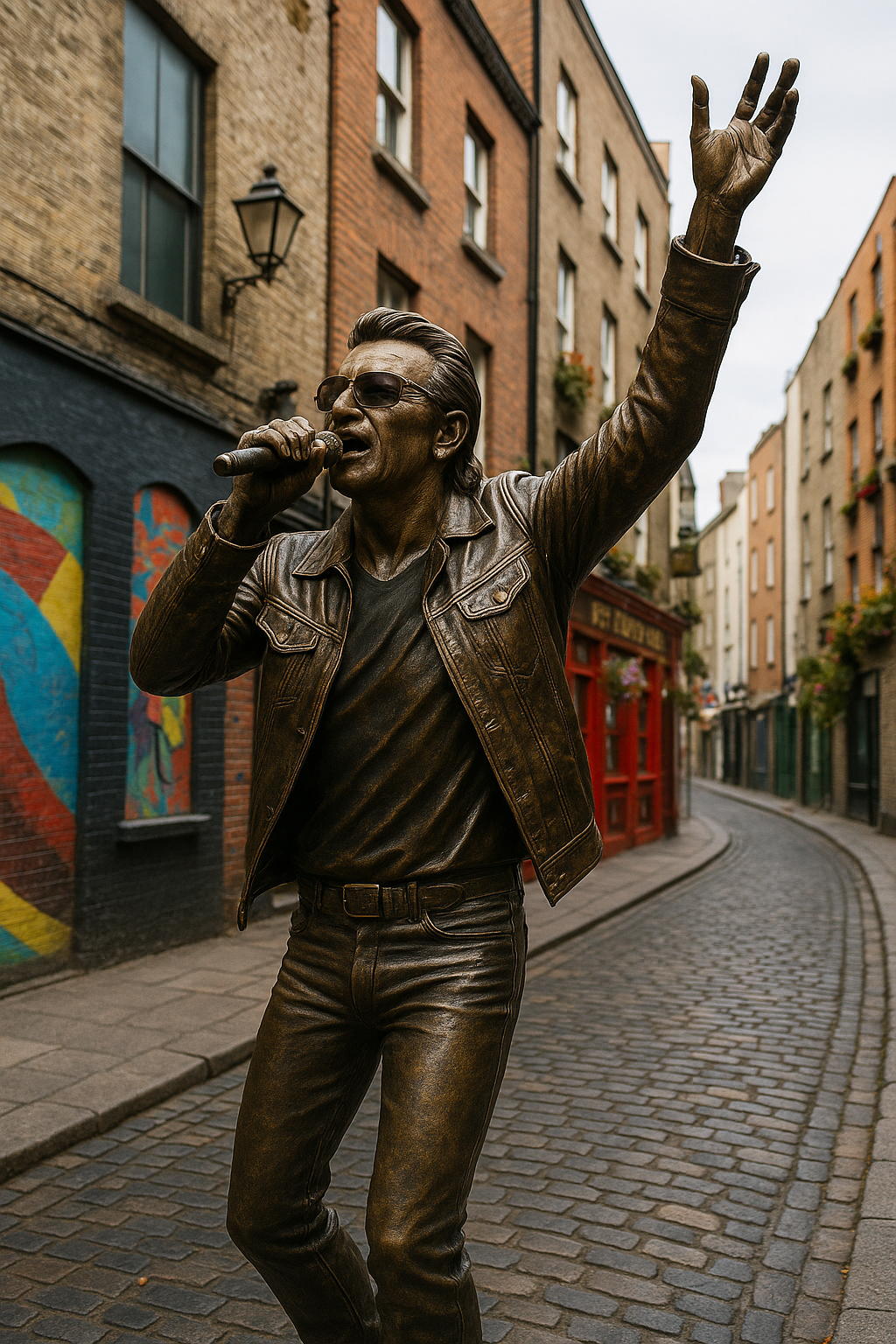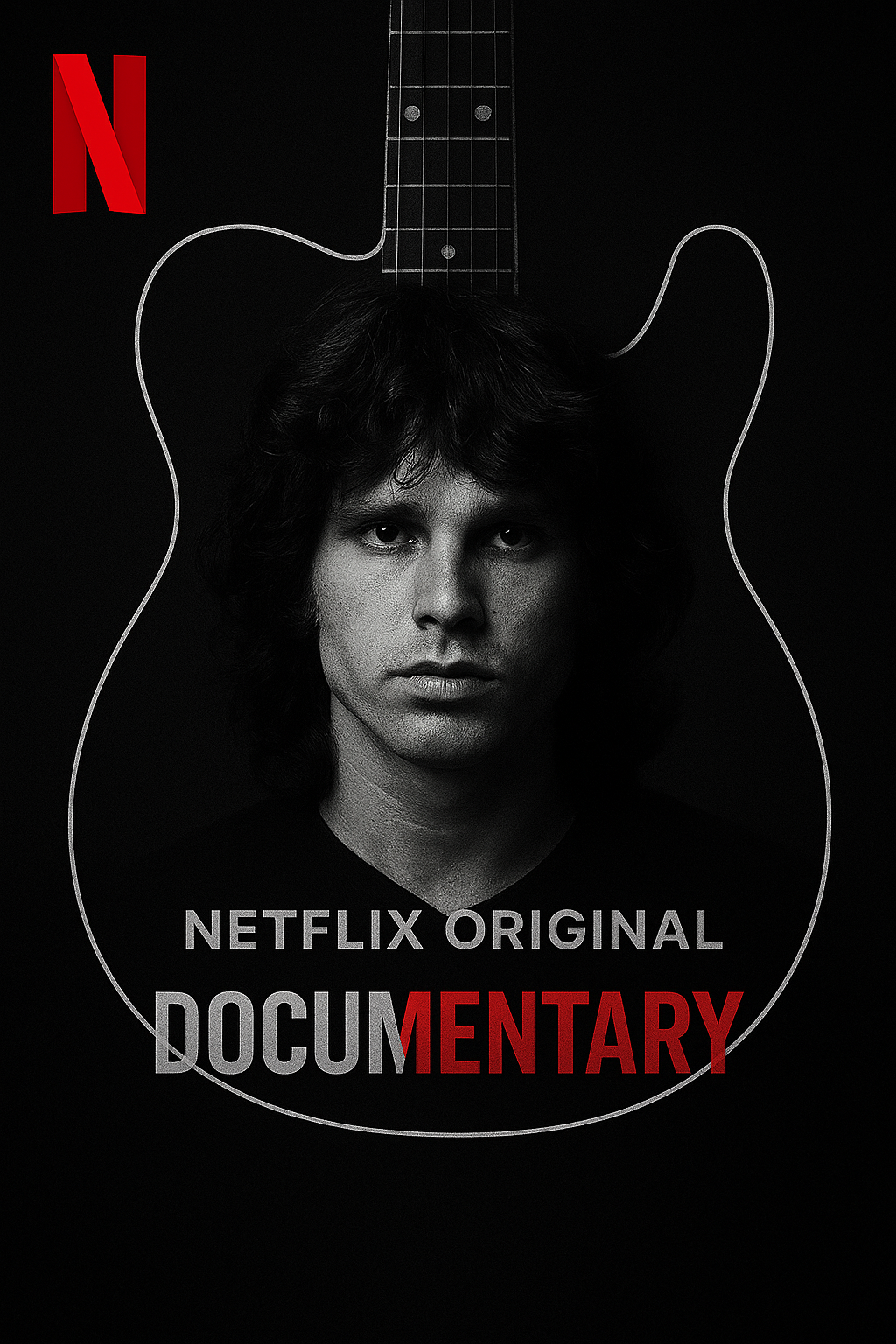Bono, the iconic frontman of U2, has received countless accolades throughout his illustrious career, but his latest honor marks a milestone that cements his legacy in a uniquely personal way. Netflix, the streaming giant known for its global reach and cultural impact, has unveiled a statue of Bono in his hometown of Dublin, Ireland. This tribute stands not only as a celebration of his musical achievements but also as a nod to his enduring influence on activism, art, and global consciousness.
The statue, a life-size bronze depiction of Bono in one of his signature performance stances—microphone in hand, sunglasses perched on his nose—was revealed in a public ceremony that drew fans from around the world. Situated in Temple Bar, one of Dublin’s most vibrant cultural quarters, the statue is surrounded by cobbled streets and colorful murals, offering a fitting backdrop for an artist who has always walked the line between tradition and rebellion.
Netflix’s decision to commission and sponsor the statue came as part of a broader campaign celebrating music legends whose work has shaped generations. According to the platform, Bono was selected not only for his musical contributions but for the way he has leveraged his fame to champion humanitarian causes. From founding DATA and the ONE Campaign to lobbying world leaders for debt relief and AIDS awareness, Bono has long used his voice far beyond the confines of the stage.
In the unveiling ceremony, a short documentary produced by Netflix was screened for attendees, chronicling Bono’s journey from a Dublin schoolboy to a global icon. The documentary featured rare footage, interviews with fellow musicians, and commentary from political figures and activists. It was a poignant reminder of the many hats Bono has worn over the decades—rock star, activist, philanthropist, and cultural figurehead.
Local residents and fans were visibly moved as the statue was revealed. Many spoke of Bono as not just a star but a neighbor, someone who remained deeply connected to his Irish roots despite his global fame. Schoolchildren who attended the event were seen clutching homemade signs and reciting lyrics from U2’s greatest hits, reflecting the multi-generational impact of his music.
The statue also sparked renewed interest in Bono’s early life, with local tour guides already adjusting their walking routes to include this new landmark. Stories of his formative years in Dublin—his first gigs, school days, and the early formation of U2—are finding fresh audiences eager to understand the environment that shaped one of the world’s most influential musicians.
Critics and cultural historians have noted the symbolic power of the statue’s location. Temple Bar, with its juxtaposition of ancient heritage and modern artistic expression, mirrors Bono’s own career—a seamless blend of tradition and innovation. For Netflix, this location was essential to convey the authenticity and depth of Bono’s connection to his homeland.
The statue’s design was the work of renowned Irish sculptor Aisling Kavanagh, who collaborated closely with Bono and Netflix during the process. Kavanagh stated that capturing Bono’s “spirit of movement” was her central challenge. She spent months studying his performance style, his gestures, and even his posture during interviews to create a sculpture that feels alive, mid-performance, as if ready to break into a verse of “With or Without You.”
While the statue has received widespread praise, it has also sparked debates about celebrity memorialization. Some critics have questioned the role of a corporate entity like Netflix in commissioning such a public artwork. Others argue that Bono’s contributions to global social justice more than warrant such a tribute, especially given the personal nature of the location and the community support behind it.
Bono himself addressed the crowd at the unveiling, offering a mixture of humility and characteristic wit. “I’ve been called a lot of things,” he joked, “but ‘immortalized in bronze’ is a new one.” He went on to express his deep gratitude to the people of Dublin, to Netflix, and to the countless fans who have followed his journey. “This city raised me, shaped me, saved me,” he said, “and it continues to be the place where I find my voice.”
In the days following the unveiling, thousands have flocked to the site, many leaving notes, flowers, and even guitars as tokens of appreciation. For some, it’s a pilgrimage; for others, it’s simply a celebration of a man whose music formed the soundtrack of their lives. The statue has already become a selfie hotspot, a symbol of pride, and a powerful reminder of what one person can achieve when art and purpose intertwine.
Netflix’s commemorative effort has reignited interest in Bono’s work, both past and present. Streams of U2’s discography have spiked, and social media has been flooded with tributes, memories, and newly-discovered performances. More than just a statue, this moment has become a global celebration of artistry, activism, and the enduring legacy of a boy from Dublin who dreamed big—and changed the world.



